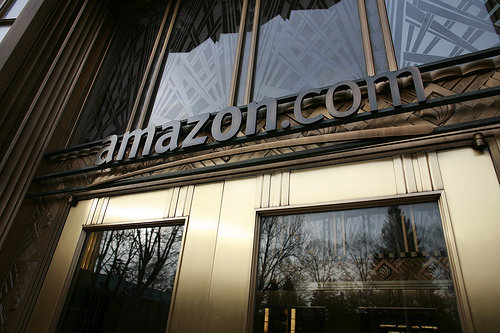by Hubert Marleau, Market Economist, Palos Management
June 9, 2023
Edward Luce of the Financial Times wrote: “Shakespeare foretold the tale of America’s latest debt-ceiling crisis - full of sound and fury, signifying nothing.” Now that Congress has passed a debt deal that doesn’t increase taxes, with marginal restraint on government spending growth, which Joe Biden and Kevin McCarthy hammered out, markets will likely focus on monetary policy over the next 10 days. What should be an appropriate monetary stance is easy to determine until a decision has to be made on when enough is enough. Have we reached that point in the cycle? According to Raghuram Rajan, professor of Finance at the University of Chicago, the Fed is damned if it raises rates and damned if it doesn’t. This confusion arises because opinions are as divisive as politics itself.
Monetary policy always operates under uncertainty over the trajectory of the economy. US central bankers are convening for a 2-day meeting on June 13-14. Whether they decide to pause or raise interest rates will depend on their assessment of Friday's employment data, next week’s inflation report, and the impact of recent banking turmoil on money flows. In this regard, the decision involves weighing the trade-offs.
On June 2, the US misery index stood at 8.6 points: 4.9% for inflation and 3.7% for the unemployment rate, with inflation content accounting for 57%. Although a noticeable improvement has been registered, it is still too high, exceeding the historical average of the past 30 years, and falling short of the desired optimal level. Based on my readings on the subject matter, an ideal number would be 6.0 points, with an inflation content of approximately 33%. In other words, the economy needs to cool off to recalibrate the labour market, cut down inflation expectations and reduce commodity prices.
While commodity prices have already dropped significantly and inflationary expectations have been contained, the risk lies with hiring, which is struggling to return to pre-pandemic levels. There are tentative signs of improvement, but the process is slow. On Wednesday, the Bureau of Labor Statistics (BLS) reported a surprising increase of 358,000 job openings in April, bringing the total to 9,745K and keeping the job vacancy-to-worker ratio above 2.
According to Ben Bernanke and Olivier Blanchard, two highly regarded economists, the unemployment rate needs to rise from 3.7% to 4.3%, which is not much higher than the estimated natural rate of unemployment at 4.0%. Interestingly, in a working paper they argued that labour does not appear to be the main driver of inflation. Counterintuitively, Adam Shapiro of the San Francisco Fed supports their analysis. His own study found that the impact of higher employment costs on non-housing services, where wages are the largest component of cost, is significant, but relatively small in magnitude.
In this connection, it may not be necessary to tighten the screws any more than the monetary authorities have already done. Moreover, some serious consideration must be given to a possible default wave. The U.S. high-yield bond default rate through April rose to 2.1% from 1.1% and U.S. loan default rates rose to 3.1% from 1.4%. In fact, corporate bankruptcies have hit their highest number since 2010. Deutsche Bank believes that by the fourth quarter of 2024, the U.S. high-yield default rate will peak at 9%, and the U.S. loan default rate will reach 11.3%. I do not expect they will come to the rescue of those who are about to default, but I do not believe that they want another crisis on their hands either.
The current monetary stance is forcing macro-trends to behave as they should in order to achieve an immaculate disinflation or a very soft landing, which is the desired outcome of the Fed.
The Atlanta Fed’s Now Casting model has an estimated increase of 2.0% for R-GDP in Q2, compared to the previous expectation of 3.0%. Supporting this continuing downturn is the household employment survey, which confirms an easing of labour pressure. The unemployment rate increased to 3.7% in May.
Meanwhile, the U.S. labour productivity report showed labour cost, over the last 6 months, was much lower than originally thought. The revisions showed hourly compensation fell 0.7% in Q4 of 2022 rather than increasing 4.9%, with unit labour cost down from 3.3% to -2.2%. This is starting to show up in wage rates. In May, average hourly earnings rose 0.3%, less than predicted and lower than in April, and input costs that manufacturers pay to produce goods are dropping. The NY Fed’s Multivariate Core Trend (MCT), which measures the tenacity of inflation persistence, shows persistent inflation declined sharply in April.
Thus, why not let the tighter lending conditions for companies and consumers, the draining of personal savings and the replenishing of the Treasury’s cash balances effectively do the job of the central banks for the next while? This is what is expected and what the Fed should do. The combination of these factors will likely draw deposits out of the banking system and deplete bank reserves, leading to a further decrease in the money supply.
The markets are assuming that the Fed sees things in that way surreptitiously. Accordingly, the best policy is to let the natural process work itself out. In this respect, using the CME FedWatch tool, there is a 67% chance of a hold on interest rates. The robust non-farm payroll (NFP) report hardly changed the odds. The bottom line is inflation will eventually reach its appropriate level. However, it will take a little longer than we would like, but a catastrophe will be averted. Thus, interest rates will likely fall slowly, following the path of inflation, but remain higher than pre-pandemic norms to make sure that inflation stays at bay.
In response - surprise, surprise - the S&P 500 registered a weekly gain of 77 points, up 1.8% to close at 4282. That’s 11% off the peak.
.
















